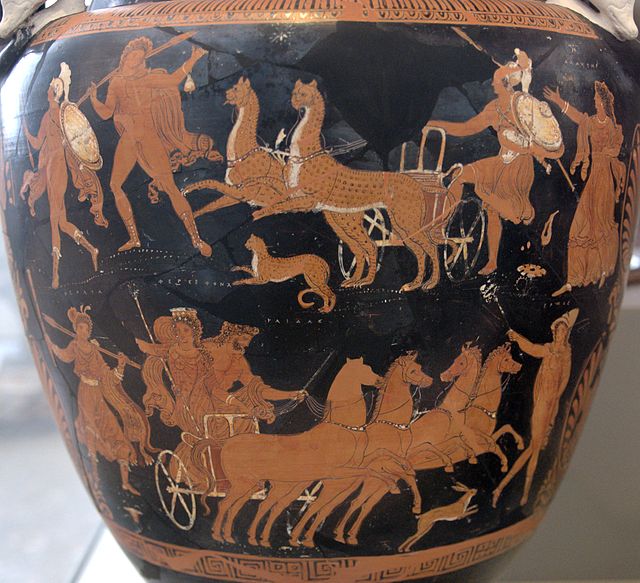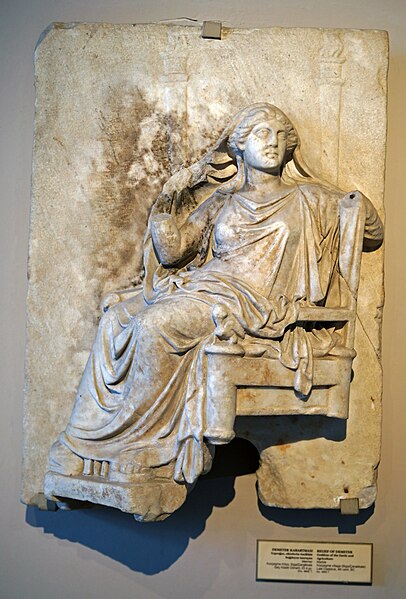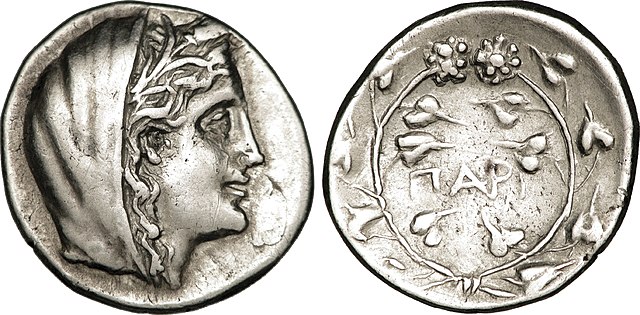The Thesmophoria was an ancient Greek religious festival, held in honor of the goddess Demeter and her daughter Persephone. It was held annually, mostly around the time that seeds were sown in late autumn – though in some places it was associated with the harvest instead – and celebrated human and agricultural fertility. The festival was one of the most widely celebrated in the Greek world. It was restricted to adult women, and the rites practised during the festival were kept secret. The most extensive sources on the festival are a comment in a scholion on Lucian, explaining the festival, and Aristophanes' play Thesmophoriazusae, which parodies the festival.
Painting of the Thesmophoric procession by the American artist Francis Davis Millet.
The Thesmophoria commemorated the kidnap of Persephone by Hades, and her return to her mother Demeter. Hades and Persephone ride the chariot on the lower part of this vase which depicts the myth; Demeter is shown on the top right corner.
In ancient Greek religion and mythology, Demeter is the Olympian goddess of the harvest and agriculture, presiding over crops, grains, food, and the fertility of the earth. Although Demeter is mostly known as a grain goddess, she also appeared as a goddess of health, birth, and marriage, and had connections to the Underworld. She is also called Deo. In Greek tradition, Demeter is the second child of the Titans Rhea and Cronus, and sister to Hestia, Hera, Hades, Poseidon, and Zeus. Like her other siblings except Zeus, she was swallowed by her father as an infant and rescued by Zeus.
A marble statue of Demeter, National Roman Museum
Marble relief of Demeter. Late Classical period, 4th ct. BC. Istanbul Archaeological Museums
Demeter on a Didrachme from Paros island, struck at the Cyclades.
Demeter, enthroned and extending her hand in a benediction toward the kneeling Metaneira, who offers the triune wheat (c. 340 BC)






